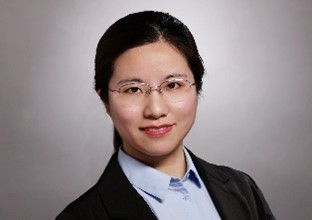Weiyuan Duan
Solar Cells
Research Center Jülich, IEK5-Photovoltaics,Wilhelm-Johnen-Straße, 52425 Jülich, Germany
Email: w.duan@fz-juelich.de
Biography
|
Since 08/2016 Scientific researcher in IEK-5, Research Center Jülich, Head of Advanced
|
|
|
Abstract for Presentation
Catalytic-doping of intrinsic amorphous silicon thin films for the application in high efficiency silicon heterojunction solar cells
Silicon heterojunction (SHJ) solar cells are of high interest for research and mass production, due to their high power conversion efficiency and relatively easy production process [1]. However, compared to other high efficiency crystalline silicon solar cell technologies, SHJ solar cells have lower short-circuit current density (Jsc) caused by parasitic absorption of hydrogenated amorphous silicon (a-Si:H) and transparent conductive oxide (TCO) layers. Catalytic doping (cat-doping) is a method to post-dope samples using hot wire chemical vapor deposition with a shallow doping depth of 5-20 nm [2]. This work presents a comprehensive study of how to improve the Jsc of SHJ solar cells to over 40 mA/cm2 with cell efficiencies above 23.5% using the cat-doping method to dope intrinsic a-Si:H with phosphorus atoms.
Firstly, the properties of phosphorus cat-doped a-Si:H layers were investigated and compared with intrinsic layers using different measurement techniques such as Secondary Ion Mass Spectrometry (SIMS), X-Ray Photoelectron Spectroscopy (XPS), and conductivity measurements. Secondly, solar cells using a cat-doped front intrinsic a-Si:H layer instead of n-type/intrinsic a-Si:H layers were fabricated and compared with the regular structured SHJ solar cells.
SIMS measurements confirmed that cat-doping intrinsic a-Si:H effectively increases the phosphorus concentration several nanometers beneath the surface, as shown in Figure 1. The influence of cat-doping on the passivation of SHJ solar cells was determined by lifetime measurements, which showed an improved lifetime in the low charge carrier density after cat-doping.
For the solar cells, measurements showed that the best cat-doped solar cell had an increased Jsc of 40.19 mA/cm2 compared to the best reference cell, which had a Jsc of 39.93 mA/cm2. This increase is mostly caused by the improved external quantum efficiency (EQE) in the low wavelength region, due to the reduced a-Si:H parasitic absorption when n-type a-Si:H is excluded, as shown in Figure 2. Despite the higher Jsc, the efficiency is still inferior compared to the regular cells, because of a slight decrease of fill factor (FF) and open-circuit voltage (Voc) caused by TCO sputter damage. A route towards higher efficiency solar cells with the cat-doping method has been discussed.
References
[1] M. Taguchi*, ECS J Solid State Sci Technol., 10(2021) 025002.
[2] Y. Liu, M. Pomaska, W. Duan*, D. Qiu, S. Li, A. Lambertz, A. Gad, U. Breuer, F. Finger, U. Rau, K. Ding, ACS Appl. Mater. Interfaces, 12(2020)56615-56621.
WELCOME TO CHINA TO ATTEND THE ICANS
23-26 August, Nanjing, China
Connect with us:



